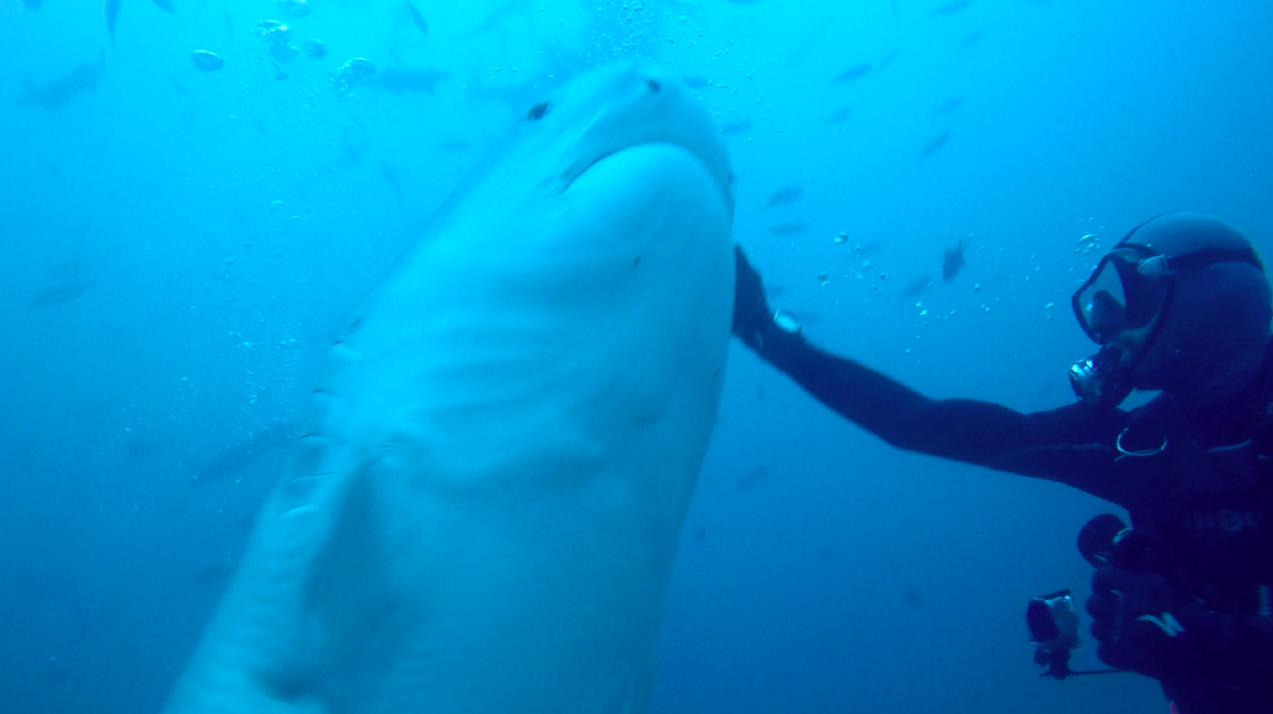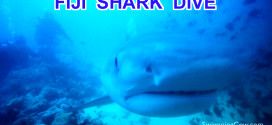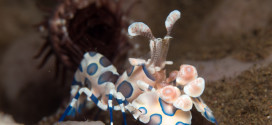Sharks. It’s hard to think of a more misunderstood marine creature on the planet than sharks. Mention the idea of being in the water with one to a non-diver and the typical response is a mixture of apprehension and fear. But ask a scuba diver what are his or her favourite creatures to see underwater, and 9 times out of 10 sharks will be among them.
Why Dive With Sharks?
So why do divers go out of their way to dive with sharks? Are we insane? The reasons will become evident as you read on but here’s a quick look at the facts: 2015 was the year with the highest number of shark attacks on record, but even then the global total stood at less than 100 incidents (98 to be exact). Of these, just 6 were fatal. Six. In a year when shark incidents hit an historical high. That’s a pretty low figure however way you cut it. And of the 98 incidents, surfers accounted for half of the total victims whereas none of the victims were divers.
The reason why divers seem to have a “better relationship” with sharks are many fold but that’s beyond the scope of this post. There’s actually a Reddit post that explains this quite well and offers some good tips for avoiding shark attacks that are applicable to divers and non-divers alike. I’ll link to that later in the post.
For now just know that in reality sharks do not at all live up to their reputation (ie. mindless killing machines that try to eat everything that come in their way). In fact, they are actually pretty risk-adverse creatures and are particularly cautious when they come across something that looks distinctively un-fishlike. For instance, if you encounter one of the smaller species like a reef shark while diving and try to swim after if, they would actually try to avoid you by swimming away (I know this because I’ve tried doing this on several occasions; wouldn’t be in a hurry to do this with the predatory sharks though).
Enough preamble. Let’s get straight into the actual Fiji shark dive trip report. I’ll keep this as straightforward and factual as possible for those trying to plan a Fiji shark trip. (Besides, if I start waxing lyrical about how mindblowing the experience actually was I’ll be reduced to a blubbering, incoherent mess.)
The Basics
My friends and I (a group of 4 divers and 1 non-diver) stayed at Beqa Lagoon Resort (“BLR”). This is a dive resort on Beqa Island, about half an hour boat ride from Viti Levu. The resort has exclusive rights to dive at the Cathedral, a dive site they’d developed a few years back. These days, it’s known as a place with regular tiger shark sightings, although bull sharks are of course a frequent guest too. Fiji, after all, is “the bull shark capital of the world”.
The Pre-Dive Prep
Prior to the shark dives, the resort’s resident marine biologist Sefano gave a half hour long dive briefing which covered ascend/ descend procedures and the 5 shark species we might encounter. He also talked about the different behaviour of various species, and noted that some of the less skittish sharks might be comfortable enough to approach us for a closer look. This heads up turned out to be a very good idea, as it primed us for what happened later on.
The Cathedral is a site 20 metres deep. Since you are to stay at this depth for the whole dive, the dives themselves are relatively short (30 minutes). Nitrox and a dive computer are helpful (especially if you end up going into deco, as we did…)
So far, there’ve been 21 different tiger sharks that have been sighted at the Cathedral, some as big as 4.5 metres. The boat ride from the resort to the site is about 30 minutes (although the resort website say it’s about 15 minutes).
Once at the site, we all made the simple descent down to the wall where we were to stay and wait for the sharks. Water temperature when we went around early August was 25ºC for all the Cathedral dives. I had a 5mm wetsuit and a hoodie and that proved to be just adequate. If you’re sensitive to the cold and absolutely require a stable hand for the second dive (eg. to operate your camera) I’d recommend a 7mm.
A diver acting as feeder was positioned in front of us to release the fish scraps. Immediately behind us, another diver stood guard with a metal pole, presumably to be used to nudge the sharks away on their uber-sensitive noses if things somehow got hairy.
It’s worth noting that unlike other dive operators in the area, BLR no longer hand feeds the fish scraps to bait the sharks. Sefano explains that hand feeding likely alters the behaviour of sharks, so now they try to keep fish scraps to a minimum and avoid unnatural ways of feeding.
The first impression when you descend is “woah! So much fish!!” Napoleon wrasses, triggerfish, rainbow runners, remoras, snappers – it was an absolute maelstrom! The only time I recall seeing this amount of fish was when I was in Raja Ampat. This scene alone was quite a treat. And before long… a looming shadow came into view. We had our first bull shark visitor.
We also saw a nurse shark, but unfortunately it went away once the apex predators of these waters – the tigers – showed up. In total, we did 4 shark dives at the Cathedral and the last dive was the highlight: visitors included 13 bull sharks and a medium-sized tiger shark (about 3 metres).
The bulls never took much interest in us and were going after the the fish scraps – except that one time when a bull shark circled us twice and at one point swam less than 2 metres above us, offering some truly awe-spiring views of its torpedo-like build and impressive girth). Once the bull confirmed that we weren’t fish (read: food) it went back to where the fish scraps were being distributed.
The tiger shark was a completely different story. During the pre-dive briefing, Sefano mentioned that tigers can be particularly inquisitive and may actively seek out interaction but assured us that tigers, like bulls, were highly sentient and appeared to possess cognitive abilities as they tend to go up to the “regulars” (ie. dive professionals from BLR) like himself for interaction.
Sure enough, on our last dive the tiger shark that showed up went up to Sefano twice for nose rubs – we know it wasn’t for food since Sefano doesn’t take part in the feeding process at all. The tiger also swam right up to the feeder as if looking for food, possibly because it had been accustomed to hand feeding by other operators and was expecting to be hand fed here too? You can see this happening at the 1:05 mark in the video above, when it opens its jaws but then promptly loses interest and swims away once he realises the feeder has no fish scraps in hand.
He did spend some time gliding up to us and inspecting every diver; at one point he was so close he was within arm’s reach! I remember looking into his eye and just being completely starstruck by this beautiful creature.
When we reached our no decompression limit at about 32 minutes, we couldn’t ascend because, well, there was still a tiger shark swimming about looking for nose rubs! So we ended up going into deco and I spent 18 minutes doing the safety stop.
Overall Thoughts
I think the dive team at BLR did a marvelous job keeping us safe for a phenomenal experience up close with some of the most impressive sharks in the world. You can see the dive team has thought carefully about each aspect of the operations and taken the necessary safety precautions, some of which I haven’t had the chance to mention here. The close proximity to these massive sharks combined with the well-managed environment easily made this one of the most memorable dive trips of my life.
The biggest surprise for me was how inquisitive and (crazy as this may sound) puppy-like tiger sharks can be. A friend who had gone diving with tigers had previously described them as “big aquatic puppies” and while I didn’t entirely believe that before this trip, I sure do now! The resemblance is most uncanny at around 0:50 in the video.
Also, that thing you might’ve heard about tiger sharks being partial to nose rubs? Confirmed. There are lots of YouTube videos showing this behaviour (here’s a great clip) but to witness this in person just elevates this experience to a whole new level.
While I won’t be jumping into the water sans dive gear to interact with bulls or tigers anytime soon – they’re still predatory creatures and like all other sentient creatures each shark has their own personality – this Fiji trip has given me a whole new level of appreciation for sharks and why they should be respected and protected, and not culled the way they are today (conservative estimates: 100 million sharks killed per year).
And did I mention that I’m now somewhat obsessed with tiger sharks? Such. Beautiful. Creatures.
For anyone looking to stay at BLR, I’d highly recommend attending the shark presentation that Sefano conducts in the restaurant, which seems to be a weekly event that takes place around mid-week. It’s extremely interesting for divers and non-divers alike and you’re guaranteed to learn something new and fascinating about sharks.
For instance, I learned that sharks are worth a lot more alive than dead. In fact, the values are different by a few orders of magnitude. A study by the Australian Institute of Marine Science found that a single reef shark in Palau, dead and sold on the market, goes for about US$108 on average. Meanwhile, an individual reef shark frequenting the waters of Palau is estimated to generate US$179,000 in tourism dollars per annum, or (conservatively speaking) approximately US$1.9 million over the course of its lifetime.
Even if you discount the important role that sharks play in maintaining the health of our coral reefs and the greater marine ecosystem, this is a compelling case for the conservation of these impressive creatures from an economic perspective.
All in all, I’d highly, highly recommend a trip to Fiji to dive with these stunning creatures of our great blue oceans. It’ll truly change the way you look at sharks and open up a whole new world. To end, here’s the Reddit link I mentioned along with other great references:
 J.J. Pedersen let’s go see the world
J.J. Pedersen let’s go see the world



